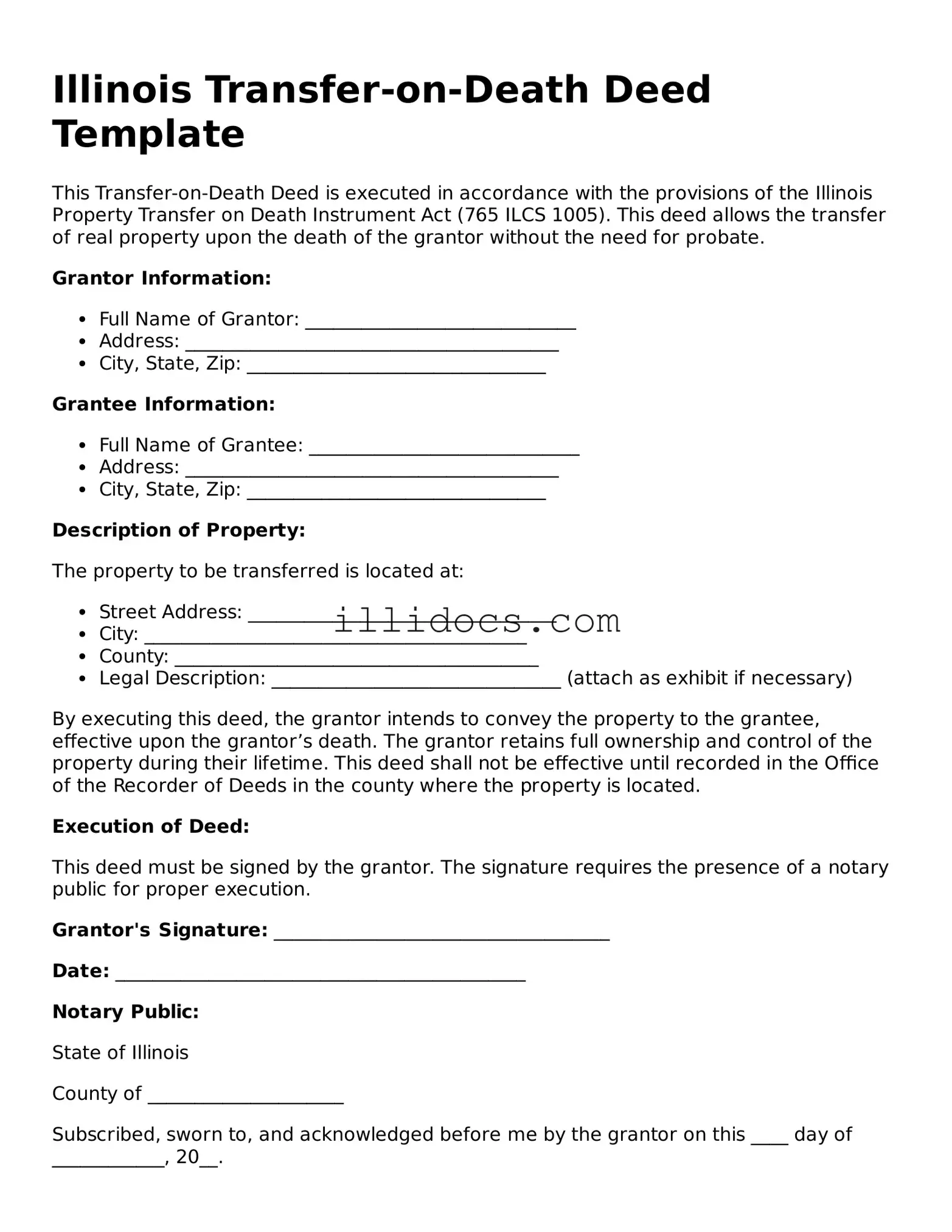What is an Illinois Transfer-on-Death Deed?
The Illinois Transfer-on-Death Deed is a legal document that allows property owners to transfer their real estate to designated beneficiaries upon their death. This deed helps avoid probate, simplifying the transfer process. It is important to note that the property remains under the owner's control during their lifetime, and they can revoke or change the deed at any time before their death.
Who can be named as beneficiaries in the Transfer-on-Death Deed?
Beneficiaries can be individuals or entities, such as family members, friends, or charitable organizations. However, it is essential to ensure that the beneficiaries are clearly identified in the deed to avoid any confusion or disputes later on. It is advisable to consult with a legal professional to ensure that the designations are valid and enforceable.
How do I create and file a Transfer-on-Death Deed in Illinois?
To create a Transfer-on-Death Deed, you must complete the appropriate form, which includes details about the property and the beneficiaries. Once completed, the deed must be signed in the presence of a notary public. After notarization, the deed should be filed with the county recorder's office where the property is located. Filing fees may apply, so check with your local office for specific requirements.
Can I revoke a Transfer-on-Death Deed after it has been filed?
Yes, you can revoke a Transfer-on-Death Deed at any time before your death. To do this, you must create a new deed that explicitly revokes the previous one or file a formal revocation document with the county recorder's office. It is crucial to ensure that the revocation is properly executed and recorded to avoid any potential issues in the future.
